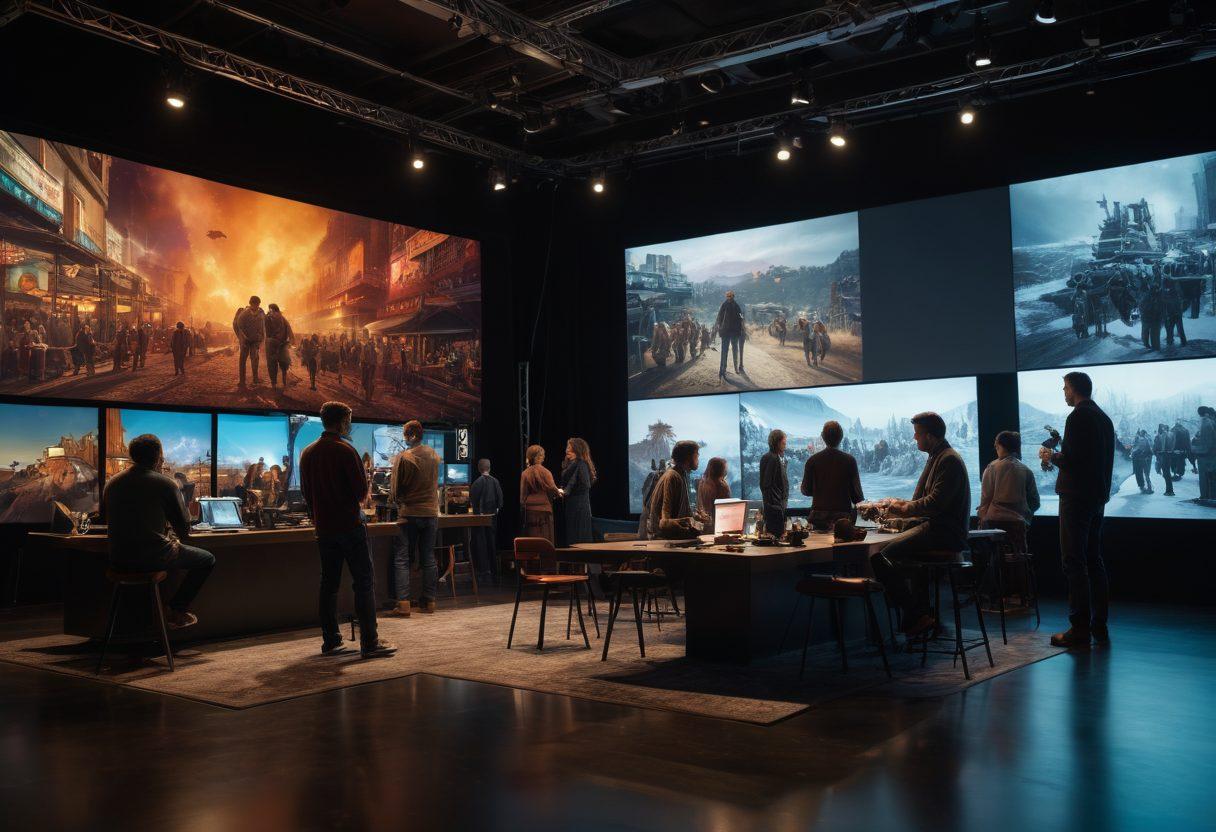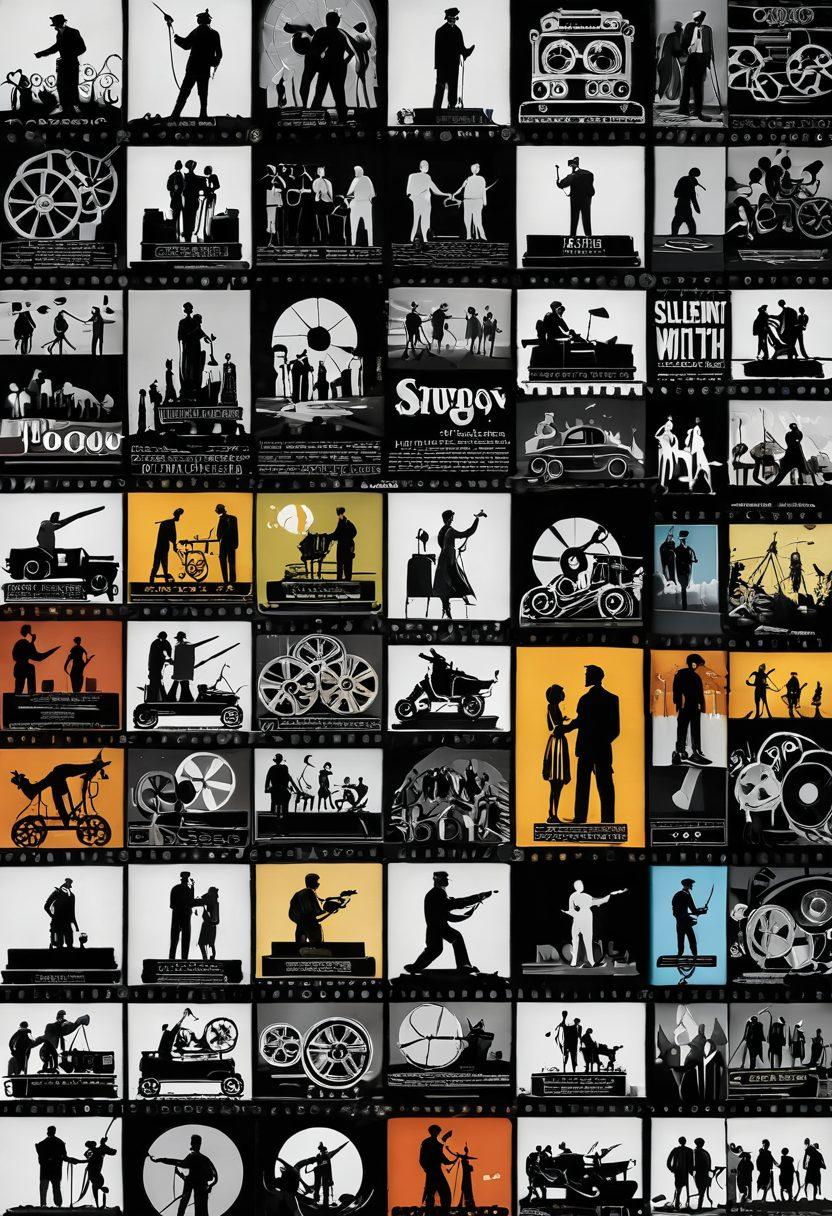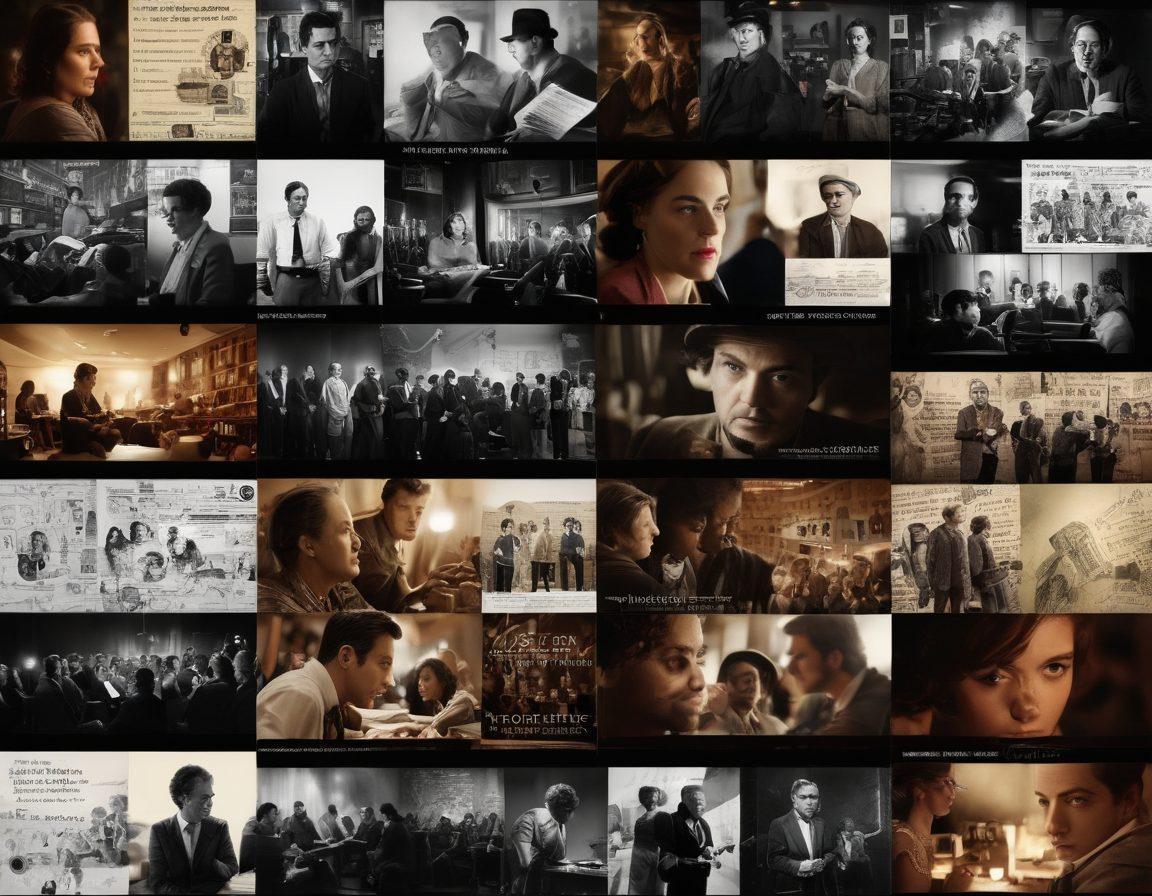Exploring the Art of Cinematic Storytelling: Techniques and Trends in Film Today
In the ever-evolving world of cinema, the art of storytelling holds steadfast as the cornerstone of captivating films. Have you ever sat in a dark theater, entranced by the flickering images on screen, and wondered how such powerful stories come to life? Unveiling cinematic techniques is more than just a behind-the-scenes look; it's about understanding the profound ways in which filmmakers connect with audiences. Whether it’s through the intricacies of cinematography techniques or the nuances of scriptwriting, each element plays a vital role in crafting stories that resonate deeply with viewers. Let's embark on this journey into the heart of cinematic storytelling, uncovering the tools that make it all possible.
Cinematography techniques stand out as vital brushes in the filmmaker's palette, offering unique ways to shape a story’s emotional landscape. Picture it: a sweeping aerial shot over a breathtaking landscape, or a close-up of an actor's eye revealing profound sorrow. These choices not only enhance visual storytelling but also evoke feelings and ideas that linger long after the credits roll. For those passionate about cinema studies, engaging with these techniques enhances their understanding of film direction. The power of imagery combined with the right tone can elevate an independent film from good to unforgettable. As the saying goes, 'A picture is worth a thousand words,' and in cinema, every frame tells a tale.
But what about the storytelling inherent in documentary filmmaking? Unlike scripted narratives, documentaries grapple with reality, spinning real-life experiences into compelling narratives. The art lies in careful film production and thoughtful editing that can transform raw footage into a cohesive and engaging story. Documentaries invite us to move beyond entertainment towards reflection, forcing us to confront truths often glossed over. Audiences are drawn in by authenticity, making the latest film reviews of such works more essential than ever in the digital cinema era, where information is available at our fingertips.
As we explore the realms of film theory and film history, it's hard not to notice the rise of film festivals and their role in promoting diverse cinematic voices. Independent filmmakers are breaking barriers, using innovative scriptwriting to share their unique experiences and perspectives, often leading audiences to laugh, cry, or reconsider their views. Each movie trailer gives a glimpse into this world of creativity, synthesizing the art of storytelling into quick and potent snippets that leave us wanting more. The question remains: how do these stories speak to our collective human experience? What truths are these films revealing to us?
In this dynamic film landscape, short films are also playing a crucial role in the cinematic conversation. These bite-sized narratives challenge conventions and push the boundaries of traditional storytelling formats. They allow filmmakers to experiment, hone their craft, and bring fresh ideas into the cineplex. As we analyze these stories, it’s essential to reflect on acting as an art form that creates memorable connections. Each performance carries the weight of the story, lending authenticity and relatability. Ultimately, weaving together the threads of cinematic storytelling, we find that the films we watch inspire not just entertainment but also dialogue, connection, and perhaps even action in our own lives.
From Script to Screen: The Evolution of Film Storytelling Trends
The world of cinema has always been a vibrant tapestry of storytelling, woven together by countless threads of creativity and innovation. As we embark on the journey of exploring 'From Script to Screen: The Evolution of Film Storytelling Trends,' it becomes essential to recognize how cinematic storytelling has morphed over the decades. Every frame of a movie, from the breathtaking cinematography techniques to the intimate performances of actors, tells a story, not just on the surface but layered beneath, waiting to be unveiled. Have you ever wondered how a movie can evoke such powerful emotions, drawing audiences into its narrative with just a single glance?
In the realm of film production, scriptwriting is the very foundation upon which every great cinematic tale rests. The evolution of film literature has transformed from simplistic narratives to complex characters, emphasizing not just the plot but the emotional journey of the characters within it. Consider the rise of independent film, where storytellers boldly break conventional molds, exploring personal and often challenging themes. Contemporary filmmakers harness diverse influences, inviting us to reflect on critical societal issues through their unique lenses. Are we, as viewers, more receptive to the subtlety and nuance that independent films present?
Documentary filmmaking exemplifies a different approach to cinematic storytelling, blending realism with visual storytelling in a compelling manner. As we find ourselves in an era dominated by digital cinema, filmmakers utilize cutting-edge technology to document stories that challenge perceptions and provoke thought. These films often become subjects of film criticism, dissected at film festivals and discussed in film theory classes. You might ask, what does it take for a documentary to resonate with audiences on a profound level?
Short films, often overshadowed by their feature film counterparts, play a crucial role in evolving cinematic storytelling trends. Many emerging filmmakers use the short format to experiment with themes, styles, and techniques that they later refine in larger projects. Movie trailers, too, have transformed into art forms of their own, acting as gateways into filmmakers' unique visions. With the current landscape of movie news breaking faster than ever, does the anticipation created by these trailers heighten our cinematic experience or does it risk spoiling the magic?
As we examine the intricate layers of film history, we discover that every technique, whether it’s in film direction, acting, or cinematography, contributes to a greater narrative — an enduring legacy of stories that captivate the masses. As audiences, we are not merely passive spectators; we engage, analyze, and partake in the communal experience of film. What unfolds on that silver screen is a reflection of our collective humanity, resonating through genres and generations. So, let us appreciate the diverse storytelling trends that continue to shape our cinematic landscape and inspire future filmmakers to push boundaries and redefine what it means to tell a story.
Navigating Film Criticism: Analyzing Independent and Documentary Narratives
In a world saturated with blockbuster hits and flashy movie trailers, the art of independent film and documentary filmmaking often gets overshadowed. However, these genres are rich canvases for exploring deep narratives that challenge the status quo. As we navigate the complex landscape of film criticism, it's essential to recognize the unique storytelling potential that independent films and documentaries harbor. After all, the heart of cinematic storytelling lies not only in stunning visuals but also in the narratives that bring them to life. Have you ever watched a film that left you questioning everything you thought you knew?
Film critics play a pivotal role in shaping our understanding and appreciation of cinema studies. They offer insights that not only enhance our movie analysis but also highlight the nuances and intricacies of film production. Consider this: how often do you engage with a film on a deeper level, seeking out its themes, character arcs, and visual storytelling techniques? Film criticism invites us into a dialogue, prompting us to look beyond mere entertainment. It encourages us to dissect the craft of scriptwriting and acting, to uncover the artistic intentions behind each frame. As Roger Ebert famously said, "No good movie is too long and no bad movie is short enough." Think about what that means in the context of feature films versus short films.
When we delve into the realm of independent film, we find creators willing to take risks, weaving stories that resonate with audiences on a personal level. These filmmakers often operate on tight budgets, pushing the boundaries of traditional storytelling. It’s this ingenuity that makes film festivals such a vital part of the cinematic landscape, showcasing diverse narratives that reflect our shared human experience. Many independent films highlight underrepresented voices and stories that rarely make it to commercial screens. So, what is it about independent filmmaking that captivates your attention? Is it the authenticity of the storytelling or the rawness of the production?
Documentary filmmaking, on the other hand, offers a unique lens through which we can observe the world. By blending facts with artistic expression, documentaries can educate and inspire. They serve as powerful tools for advocacy and social change, giving a voice to those who often go unheard. In the sphere of film literature, scholars might explore how documentary narratives compel viewers to reflect on societal issues, evoking empathy and action. Are you aware of the documentaries that have profoundly impacted public opinion or even sparked movements? Their stories linger long after the credits roll, emphasizing the influence of cinematic storytelling.
As we explore these genres, it becomes clear that film direction plays an indispensable role in shaping narratives. The decisions made behind the camera can redefine how stories are told and perceived. Whether through groundbreaking cinematography techniques or innovative visual storytelling, directors set the tone for their audience's experience. So, the next time you watch a film, consider how these elements meld together to create a cohesive narrative. Ask yourself: What did the film teach me? How did it make me feel? Ultimately, both independent and documentary films challenge us to think critically, a theme that resonates throughout the evolving landscape of film criticism. Let's embrace this adventure together!


